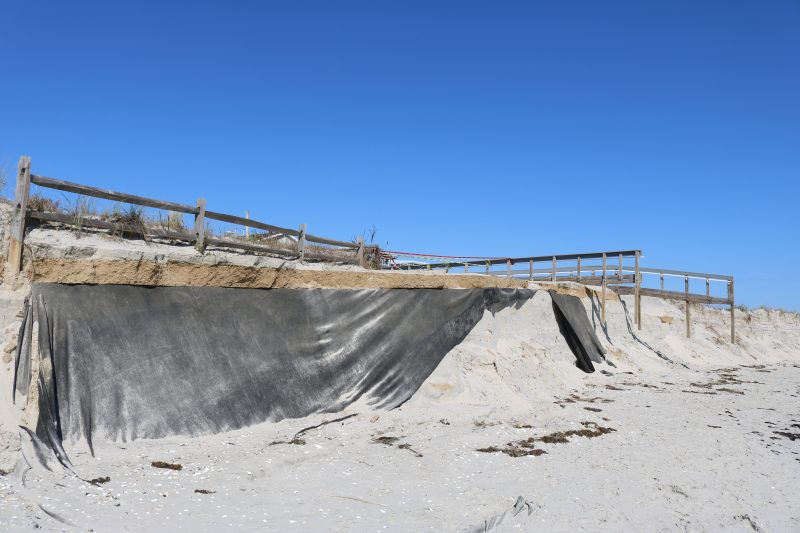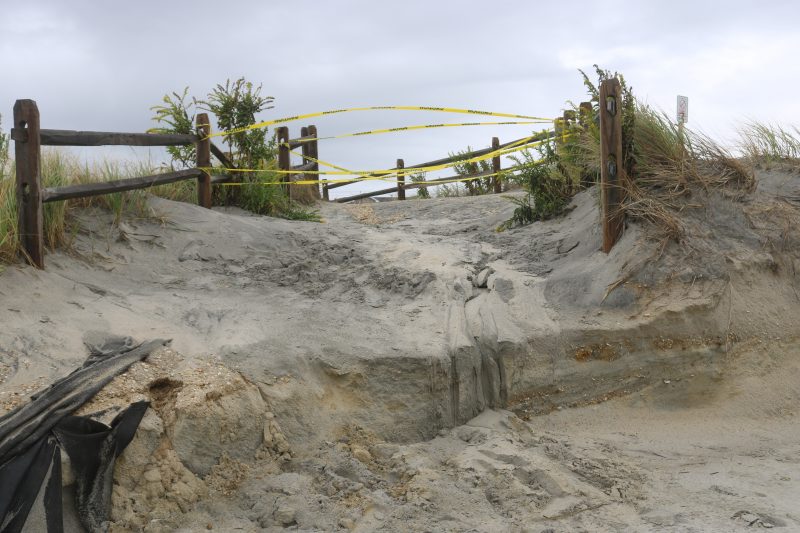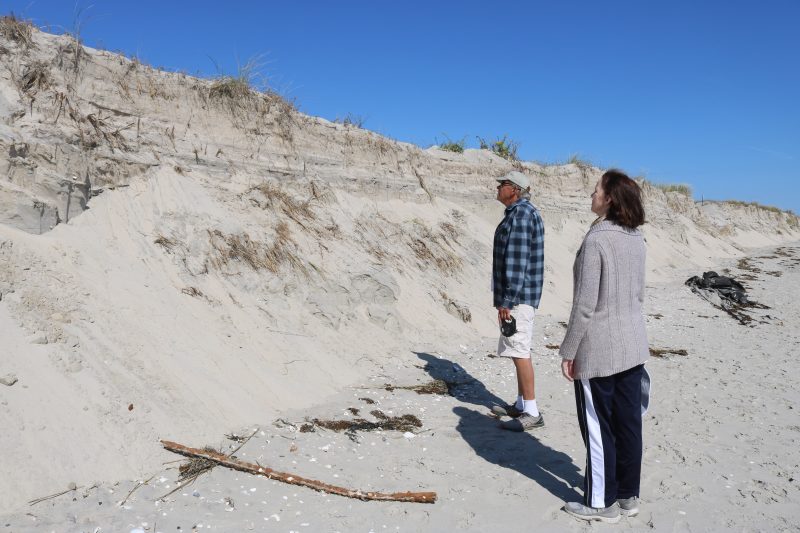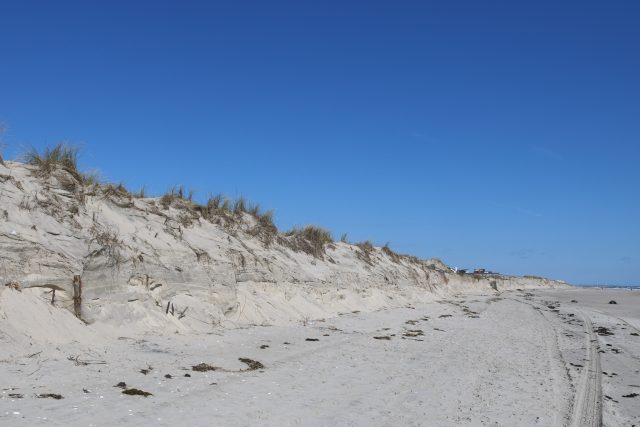By DONALD WITTKOWSKI
Sand is expensive. Just ask Sea Isle City.
Sea Isle is preparing to approve a $3.2 million bond ordinance to help pay for a beach replenishment project that will add 640,000 cubic yards of new sand to its eroded shoreline.
Barring last-minute delays, City Council is expected to introduce the funding package at its meeting Tuesday. A public hearing and final vote on the ordinance will follow at Council’s Nov. 14 meeting.
Sea Isle is getting the funding ready to pay for its share of a major beach restoration project tentatively expected to get underway in the fall or winter. The project will include Sea Isle, Strathmere and the southern part of Ocean City.
Beach replenishment projects are primarily funded by the federal government through the U.S. Army Corps of Engineers. Under the funding formula, the federal government kicks in 65 percent of the cost, while the New Jersey Department of Environmental Protection and the towns that are getting their beaches replenished subdivide the remaining 35 percent.

The Army Corps of Engineers plans to restore the eroded beaches in each town by placing fresh sand in the following locations:
- 257,000 cubic yards of sand in the south end of Ocean City from about 45th Street to 59th Street.
- 456,000 cubic yards in Strathmere from Corson’s Inlet to about Taylor Avenue.
- 252,000 cubic yards in central Sea Isle City from about 29th Street to 53rd Street.
- 388,000 cubic yards in the south end of Sea Isle from about 73rd Street to Townsends Inlet.
However, bids for the project came in significantly higher than the government’s estimate, so the Army Corps is “working through contractual and funding processes at this time and hopes to have an update soon,” said Steve Rochette, a spokesman for the agency.

Two companies submitted competitive bids for the contract, but in both cases the amounts were well above the $29.3 million prebid estimate by the Army Corps.
Great Lakes Dredging & Dock Co. of Houston submitted a bid of about $33.8 million, while Weeks Marine Inc. of Covington, La., made a bid of nearly $43.9 million, bid documents show.
In addition, the Army Corps is considering an option for an extra 1.1 million cubic yards of sand to restore damaged beaches and dunes in Ocean City, Sea Isle and Strathmere. The options would include dune repairs, new sand fencing, dune grass planting and dune crossover repairs.
The government’s prebid estimate for the full-scale work — which includes the base contract for the beach replenishment project, plus the options — was $45.6 million.
Great Lakes Dredging & Dock submitted a bid of $49.6 million for the full-scale work, while Weeks Marine came in at $63.3 million.
All three towns have experienced significant beach and dune erosion going back to last winter and the fall of 2022. In some spots the dunes have been carved away by the stormy weather, leaving steep mini-cliffs in their place.

In Sea Isle, the most severe erosion has occurred in the southern tip of the island in the Townsends Inlet section.
Sea Isle, Ocean City and Strathmere were lashed with rough surf, drenching rains and gusty winds by Tropical Storm Ophelia in late September. The storm lingered for virtually the entire week to cause even more beach erosion in all three towns.
A post-storm survey conducted by the New Jersey Department of Environmental Protection found that some of Sea Isle’s beaches suffered “moderate” erosion.
In Sea Isle, the most severe erosion has occurred in the southern tip of the island in the Townsends Inlet section. The beaches between 88th Street and 92nd Street are particularly vulnerable to erosion during the stormy winter and spring seasons, but this year the dune damage in Townsends Inlet has also extended several blocks north to include streets in the lower 80s.








